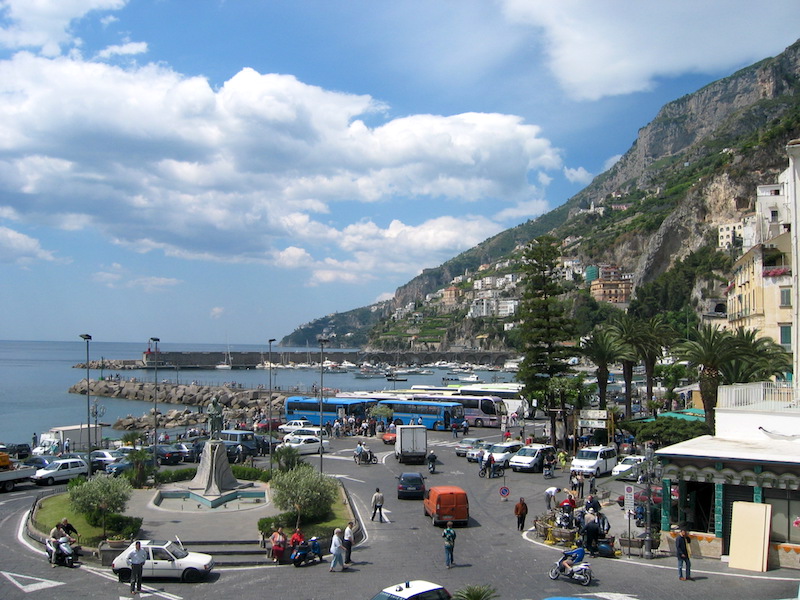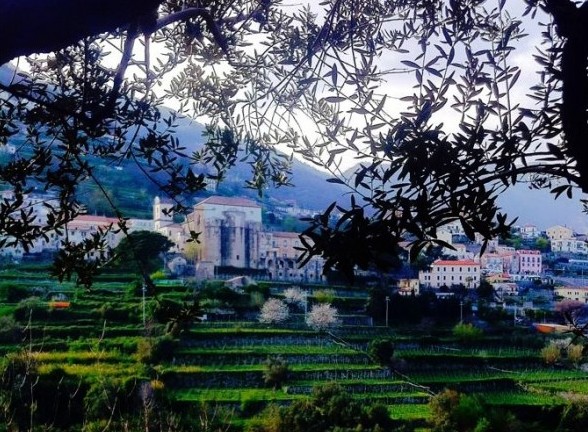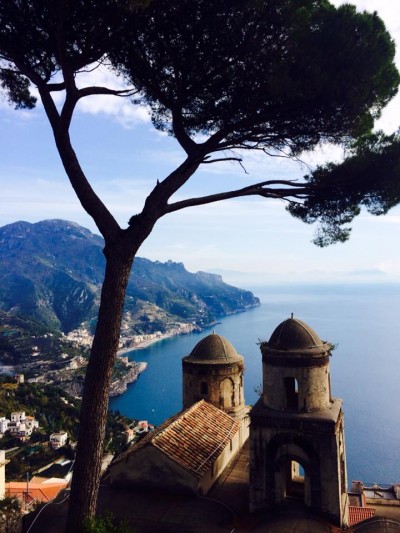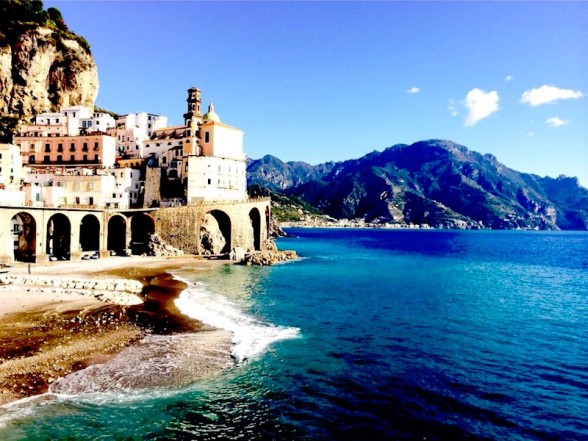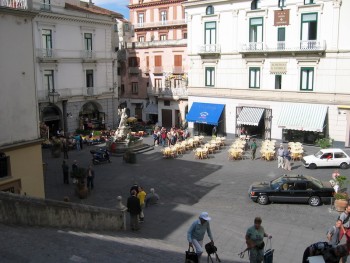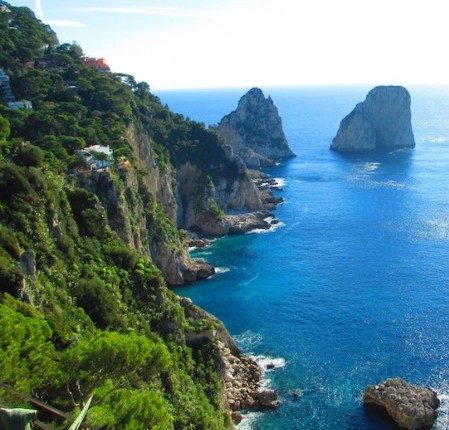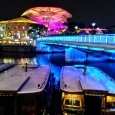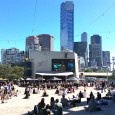Winter on Italy’s Amalfi Coast brings a vague melancholy: a hangover from too many proseccos the summer past. The tourists have dissipated back into their real lives and most businesses have closed up for Christmas. From the outside looking in, the coast is dull and lifeless during the winter, but in reality this is a special time. It is when the locals finally have the time to come together and unwind after the long, hot high season. Perhaps it has something to do with living in the shadow of Mount Vesuvius but the Napolitani have a lust for life unlike anyone else in the world. Here are my picks of the achingly beautiful Amalfi Coast.
Ravello
Perched high in the hills above the Amalfi Coast and strewn with lemon groves and olive trees the tangled, rustic beauty of Ravello is an elegant mess of ruins and ivy and villas with breathtaking panoramas of the sea some 3,500 metres below. It has long been a solace for artists, writers and musicians with the likes of Richard Wagner, D H Lawrence and Virginia Wolf all flocking to Ravello to revel in its sheer beauty and timeless charm.
Villa Rufolo and Villa Cimbrone are the two gems of Ravello. The vista from Cimbrone’s Terrazzo dell’Infinito (Terrace of Infinity) leaves an indelible impression on everyone who sees it. Gore Vidal described it on a bright winter’s day, “when the sky and the sea were each so vividly blue that it was not possible to tell one from the other”, as the most beautiful place he had ever seen in all his travels.
Trattoria Cumpa Cosimo is always a winner for lunch in Ravello. Mamma Netta with her signature array of bright aprons and artificial flowers nestled in her hair serves plate after plate of excellent homemade gnocchi Sorrentina, pasta con fagioli and her light-as-a-cloud lemon cake. I have yet to finish a winter’s meal at Cumpa Cosimo without being sent home with an armful of homegrown lemons or napkins full of freshly-baked biscotti. However, be prepared for no-frills service and to queue without a reservation in the high season.
Tuesday morning is market day in Ravello where you’ll find an assortment of fresh buffalo mozzarella, plump green olives in brine and local wines on offer. If you are visiting between late June and September make sure you attend the Ravello festival: a dazzling program ranging from orchestral music to ballet to jazz performed on the dramatic overhanging terrace of Villa Ruffolo.
If your time and budget allows, pay a visit to Mamma Agata’s famous cooking school. It will change your life. Visit www.mammaagata.com to make your reservation.
Amalfi and Atrani
Once one of the world’s greatest marine powers, the port and lower part of Amalfi were largely destroyed by a tsunami in 1343. Today, the town is UNESCO listed and has been revived to its former glory. Perfectly positioned in the middle of the Amalfi Coast, it is the ideal spot to base oneself to visit neighbouring towns by bus. If death-defying bus trips on roads designed for donkeys with razor sharp cliffs on one side and a plummeting drop to the sea on the other are not your thing, there is also a boat service offered in the summer months linking all the major towns as well as the islands of Capri and Ischia.
A day in Amalfi should always begin with breakfast at the iconic Pasticceria Pansa located right in the heart of the piazza. Try a freshly-baked sfogliatella –layers of crisp pastry enclosing sweet orange-infused ricotta speckled with citrus peel – followed by a frothy cappuccino or a tar-black espresso. Demolish these on the steps of the imposing Cattedrale di Sant’Andrea for a spot of early morning people watching.
Atrani, while technically part of the Commune of Amalfi, is widely considered to be the smallest town in southern Italy, with some guidebooks claiming it to be the smallest in Europe. Perhaps the most beautiful town on the Coast, Atrani has a character all of its own and offers top-notch dining at A’Paranza, Le Palme and Le Arcate.
After a morning swim, my favourite restaurant in this part of the coast is located halfway between Amalfi and Atrani. Perched perilously on the edge of the cliff, Da Zaccaria is a local favourite for its exquisite linguine alle vongole (spaghetti with clams) and alici (small marinated white anchovies unlike anything of the supermarket variety).
Later on, refresh yourself with an Aperol Spritz at one of Amalfi’s many bars, whether the quirky Caffe Gali run by brothers Luciano and Agostino or the new and trendy Masaniello Art Café. And don’t forget to cool down with a creamy gelato from the one of the artigianale gelaterias in the piazza!
Positano
Positano is a precarious cluster of pastel-hued buildings tumbling down to the bright blue Mediterranean below. Positano is the pearl of the coast: the most famous and indeed expensive of all the towns.
Days in Positano are best spent basking on a deckchair or browsing the chic boutiques that line the cobblestone streets adorned with sweet, bright bougainvillea. You’ll find high-end names such as Missoni alongside local linen and artisan sandal stores.
Afterwards, treat yourself to a late sun-soaked lunch at one of beachfront institutions: Chez Black, La Cambusa and Le Tre Sorelle. When dining on the Amalfi Coast resist the urge to order classics such as spaghetti Bolognese and creamy carbonora as they are not typical to this region.
Instead, take advantage of the coastal offerings and opt for local pasta such as scialatielli and paccheri with fresh seafood or pesce all’acqua pazza – which literally translates to ‘fish in crazy water’ – and local wines such as falanghina. Make sure to wash everything down with an icy cold limoncello or two. And don’t even think about ordering a cappuccino after midday.
For special occasions in Positano, splash out on a glass of prosecco on the balcony of five star hotel Le Sirenuse. The view alone is worth the price tag. If you have time, take the complimentary boat around to Da Adolfo on Laurito Beach for a feast of fresh fish, stuffed squid and local white wine with slices of fresh peach followed by an invigorating dip in the crystalline cove.
Just look for the little Da Adolfo boat with the famous red fish zipping back and forth from the pier from 10am.
In the summer, sunburnt boat boys parade proudly across the pebble beach ferrying tourists to and from the island of Capri, which makes for perfect people watching. Positano is an ideal jumping off point for a day trip to the über-glamorous island of Capri.
I could happily devote the rest of my days to living la dolce vita on this island, swimming in the blue grotto, exploring the gardens of Villa San Michele and living off the simple yet delicious ravioli Caprese.

